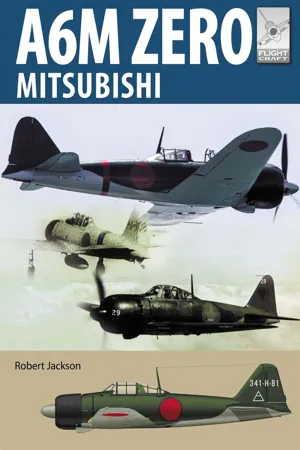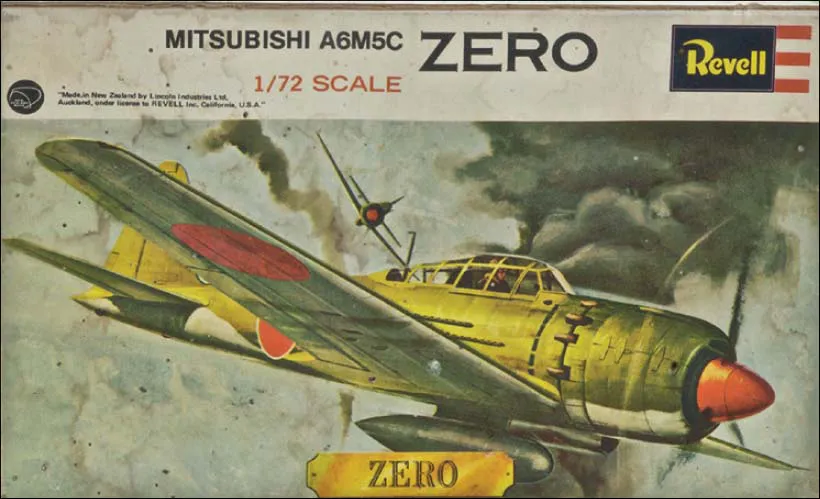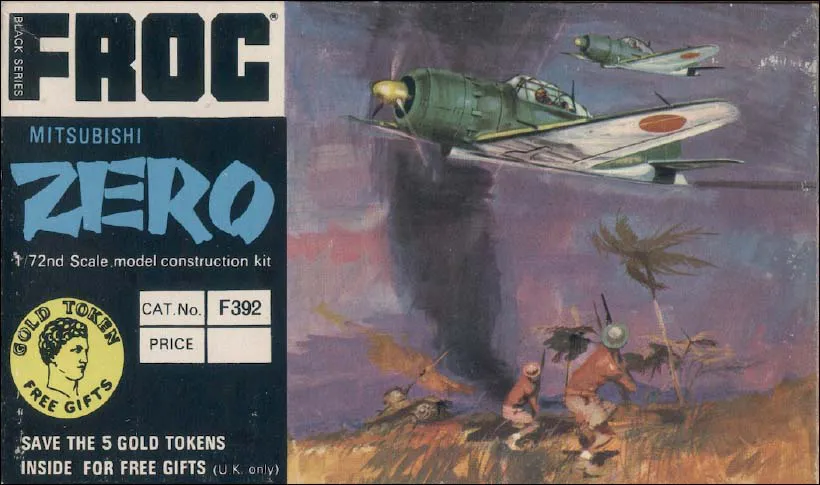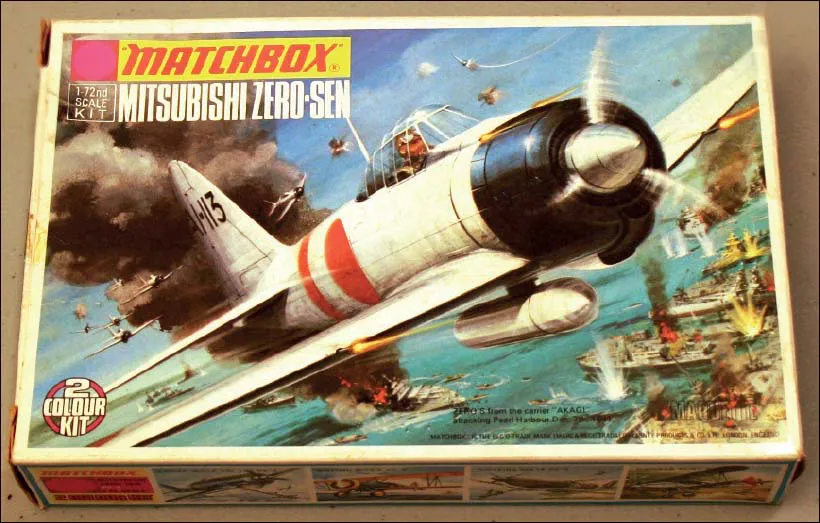![]()
Modelling the Mitsubishi Zero
Such is the historical significance of the Zero, it is hardly surprising that it has been represented in kit form many times in all the major scales – as well as some of the minor ones. About 70 different representations are known to me, with a large number of re-issues/re-boxings included in that number. Clearly it would be both impractical and rather tedious to examine all of these. Many are very rare and often the quality and accuracy of the earlier kits leaves so much to be desired that they can only be considered curios today. However, many silver-haired modellers will have fond memories of some of these early kits, so I’ve taken a look at the ones that are most commonly seen on the UK second-hand market these days.
The Airfix A6M2 Zero was first issued in 1959. It remained in production until well into the 1990s, and it took until 2011 for a newly tooled version to be issued, which will be examined later. The Zero appeared in the full range of Airfix packaging over the years, from the early bags through to a special-edition box in 1990. Even when it first appeared it was an unimpressive kit. In terms of accuracy, length and span are about right and the wing and tailplane shape in plan view are reasonable. Sadly, that’s the end of the good news. The canopy is grossly overscale (nearer 1/64) and the fuselage is far too wide in order to accommodate this. The undercarriage doors and wheel wells are incorrectly shaped. All of the smaller parts are crude and overscale and the surface detail consists of boilermaker-sized rivets and entrenched panel lines. The cowling is a rough moulding of approximate accuracy. The fit of parts is generally poor, with wing–fuselage, tailplane–fuselage and cowling–fuselage being particularly bad. At least it does well in the nostalgia ratings.
The early 1960s saw the appearance of the Revell A6M5 which, like the Airfix offering, remained in production for a long time and went through a variety of re-boxings. In terms of accuracy, the basic dimensions are good, but the wing plan is marred by the chord being too narrow at the root, which means the taper from the tip to root is not sharp enough. Tailplane plan is good. The fuselage profile is reasonable but the fin shape is not quite right. The canopy is fairly accurate and well-formed, as is the droptank. The worst feature of the kit is the awful cowling, a rough moulding that bears no relation to anything that was ever fitted to the front of a Zero. The error is compounded by a poor propeller, which has blades moulded as if it rotates clockwise, and inaccurate exhaust stubs. These are of the incorrect pattern and number and are moulded integrally with the fuselage halves. The kit is covered with heavy rivet detail and some deeply entrenched panel lines. Fit of parts is not exceptional, but better than the Airfix kit. The box art on the first issue is great though.
The early Airfix kit dates from 1959 and went through all of the various packaging types from bags to boxes.
The box art was the best feature of the 1963 Revell kit, although it was marginally better than the Airfix.
The last member of the old guard to be examined is the Frog A6M5 from 1961. This also appeared in various re-boxings, although it didn’t remain in production for as long as the Airfix and Revell offerings. Again, accuracy is a bit of a disaster, with the wingspan 3 mm over and a tailplane that is too narrow and pointed. The fuselage profile is quite good but the fin is undersized. The overall appearance is spoilt by a hopelessly inaccurate cowling and a ‘squashed’ canopy with a very sharply raked windscreen. The cowling has a curiously humped top when viewed head-on. The air scoop is totally wrong as is the shape of the gun ports. None of the distinctive exhaust stubs is included at all. The undercarriage legs are thick, heavy mouldings and the wheel bays are moulded solid. Surface detail consists of heavy raised lines of incorrect pattern. Fit of parts is better than the Airfix kit, but that’s about it for the positives.
The Frog kit was another 1960s offering that’s high on nostalgia but low on accuracy.
The Matchbox kit from 1973 was a clean moulding but offered little improvement over its predecessors.
Despite the limitation of these kits, it took a long time for anything that could be considered a significant improvement to appear. Matchbox entered the plastic kit market in the early 1970s and produced a Zero in 1973. It was more cleanly moulded, with better fitting parts and superior decals to the products previously described, but in terms of accuracy it was actually worse. It was marketed as an A6M2 but was something of a hybrid between an M2 and an M5, with a completely inaccurate cowling thrown in. Partial redemption came from Japan. There had been Japanese kits of the Zero available for some time, but the 1960s was very much a fledgling time for the plastic kit industry in that country, which had yet to achieve the dominance with which we are so familiar now. Zero kits from the likes of Nichimo and LS were sometimes seen in the UK, but in terms of accuracy they were every bit as poor as the contemporary European offerings. Things began to change rapidly in the 1970s though.
In about 1973, Hasegawa released separate kits of the M2, M3 and M5. The M5 version has overall dimensions t...




